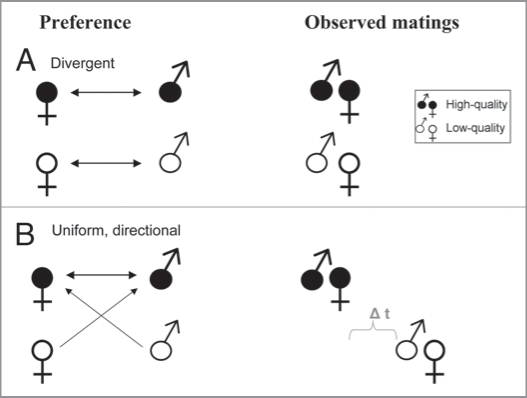Figure 1.
Different underlying processes can lead to assortative mating. (A) Divergent, state-dependent preferences in both sexes (high-quality individuals prefer high-quality mates, while lowquality individuals prefer low-quality mates). (B) Uniform, directional preference for high-quality mates in both sexes. Due to mutual choice and competition for mates, low-quality individuals are left with only low-quality mates to pair up with. Low-quality individuals will typically spend more time and energy in finding a mate.

